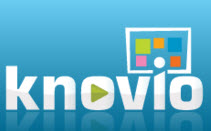 When I first started thinking about this month’s column and all of the exciting ways in which social media can be used by our K-5 students to participate in science and communicate their learning, I thought my biggest challenge would be to keep the article of a reasonable length. But then, the school librarians I know and the email lists and blogs I follow reminded me of a painful, chronic issue: in many schools: most social media applications are not allowed. While the rest of the world posts, tweets, blogs, and shares, our elementary children, the first generation totally native to this style of communication, often have no access to it during the school day.
When I first started thinking about this month’s column and all of the exciting ways in which social media can be used by our K-5 students to participate in science and communicate their learning, I thought my biggest challenge would be to keep the article of a reasonable length. But then, the school librarians I know and the email lists and blogs I follow reminded me of a painful, chronic issue: in many schools: most social media applications are not allowed. While the rest of the world posts, tweets, blogs, and shares, our elementary children, the first generation totally native to this style of communication, often have no access to it during the school day.
The research on the impact of social media on children is mixed. On the one hand, some studies have found that some preteens who engage in excessive use of social media like Facebook and MySpace have short attention spans, exhibit narcissistic behavior, and are prone to aggression and anxiety (O’Keeffe and Clarke-Pearson, 2011). On the other hand, social media can also be credited for helping children develop empathy and socialize appropriately and for engaging students who might otherwise be difficult to reach (Rosen, 2011). The key to successful use of Web 2.0 in schools seems to be that the use of social media must be smartly situated in learning contexts that are facilitated and supportive.
Still, it’s not necessarily educators’ reluctance to use or lack of knowledge of social media for learning that explains their absence from our schools; federal regulations also influence how the Internet can be used. Among them are:
- The Children’s Internet Protection Act (CIPA), which became law in 2000 before the emergence of Web 2.0, is the key federal law affecting technology use in schools. The law requires any school district that receives federal funding for Internet connectivity to filter or block obscene, pornographic, or harmful material on any computers used by minors. The law also requires districts to have an Internet safety policy. CIPA does not stipulate any specific requirements for school districts using social networking or other Web 2.0 applications.
- Title II of the Broadband Data Improvement Act was passed in 2008 and is also known as “Protecting Children in the 21st Century.” Section 215 requires schools to educate minors about appropriate online behavior, including how to safely interact on social networking sites and in chat rooms, as well as cyberbullying awareness and response.
- The Children’s Online Privacy Protection Act (COPPA) places parents in control over what information is collected from their young children online. Its rules apply to operators of commercial web sites and online services directed to children under 13 that collect, use, or disclose personal information from children, and to operators of general audience web sites or online services with actual knowledge that they are collecting, using, or disclosing personal information from children under 13.
Your state may also have laws affecting the use of the Internet in schools. Check out this handy table of state laws.
These regulations are credited for fostering a climate of over-filtering and the misuse of filtering for other purposes, such as bandwidth management. Unfortunately, administrators and technology personnel rarely receive training in the appropriate use of filtering applications (Willard, 2003). The overuse of filters and the stringency of school technology policies have not only stifled the use of technology in learning, but have also limited children’s free speech and freedom to learn—all because many district administrators are not aware that rules like CIPA allow for a librarian (no other educator is specifically mentioned) to override the filter for educational purposes! (US v. American Library Association, 539 US 194 , 2003)
The existence of these laws is spurring a reaction by many schools called “BYOD,” or “Bring Your Own Device.” Because devices with cellular connections brought from home are not subject to many of the above rules, children are able to engage freely with social media tools and resources. However, BYOD may have some drawbacks. For example, not all children can afford Wi-Fi or 3G and 4G enabled devices. The wide range of devices likely to be brought to school can make planning and teaching a Web 2.0 activity nearly impossible for the teacher. And, when devices are damaged or stolen, a touchy question of accountability can arise (Devaney, 2011).
At this point in a column about multimedia literacy and school libraries, you might be wondering what laws and perceptions regarding social media have to do with working with your school librarian. One vital, and often overlooked, role school librarians play in the school community is advocacy. In fact, advocating for policies that enable a technology-rich learning environment is a key aspect of effective school librarian practice (American Association of School Librarians, 2009). Your school librarian can be a valuable advocate in helping your school’s technology team ensure that social media is available for appropriate learning purposes. For example, your school librarian can contribute to the drafting of your school’s Acceptable Use Policy and ensure that students understand how to be ethical users of school technology. At a higher level, your school librarian can help to educate your school’s technology administration staff about what laws like CIPA allow educators to do, such as override the filter to view web sites for educational purposes.
According to the American Association of School Librarians’ Standards for the 21st Century Learner, expressing knowledge is an essential element of creating knowledge in Standard 2: Draw conclusions, make informed decisions, apply knowledge to new situations, and create new knowledge, especially
2.1.3 Use strategies to draw conclusions from information and apply knowledge to curricular areas, real-world situations, and further investigations;
2.1.5 Collaborate with others to exchange ideas, develop new understandings, make decisions, and solve problems;
2.3.1 Connect understanding to the real world. (American Association of School Librarians 2007, 3).
Web 2.0 tools are especially well suited to achieving these standards through their collaborative and communicative nature. Elementary school librarian Christina Bentheim in North Las Vegas, Nevada, uses tools like NetVibes not only to keep their students and teachers aware of what’s new and exciting in their school libraries but also to organize links and tools used in upcoming lessons. NetVibes also has a mobile version that can be used on a wide range of devices.
With your school librarian helping you navigate tricky technology policies and an endless array of devices, some areas in which you might want to get started with using social media with your students in the school library are:
 Concept Mapping—For some children, note taking and concept mapping go hand in hand. As you may recall from my discussion of “evidence buckets” in Buckets of Fun with Argument-Driven Inquiry in Your School Library!, creating conceptual knowledge helps all students understand material together. Gliffy allows students to collaborate on concept maps by sitting together or working on the same map from different devices. For a mobile-native version, check out Total Recall, a free app.
Concept Mapping—For some children, note taking and concept mapping go hand in hand. As you may recall from my discussion of “evidence buckets” in Buckets of Fun with Argument-Driven Inquiry in Your School Library!, creating conceptual knowledge helps all students understand material together. Gliffy allows students to collaborate on concept maps by sitting together or working on the same map from different devices. For a mobile-native version, check out Total Recall, a free app.
Audio and Image Creation and Editing—Aviary is a great free tool designed for elementary educators to use with their students. Designed to mimic expensive apps like Apple’s GarageBand and Adobe Illustrator, Aviary gives students easy-to-use tools to create fantastic multimedia elements. Aviary even has an app that allows students to use their mobile devices to create multimedia!
 Presentation Creation—Knovio is a great tool that allows you to add audio narration to your PowerPoint slides and hosts the slides for free! All you need is a microphone and voices. If you have a webcam, your students can even be seen alongside the slides!
Presentation Creation—Knovio is a great tool that allows you to add audio narration to your PowerPoint slides and hosts the slides for free! All you need is a microphone and voices. If you have a webcam, your students can even be seen alongside the slides!
Another powerful way to share knowledge is through story creation. A free tool like ContentClips enables educators to help their students assemble e-books through the combination of various media from the web. The e-books can be narrated and viewed in a variety of formats. Check out these examples from our sister project Beyond Penguins and Polar Bears.
Bookemon allows you to create many different kinds of e-books from templates and share them with select viewers or have them printed into hard copy books. With the Bookemon app, users of any kind of device can create and enjoy e-books.
Increasing Participation—With PollEverywhere you can quickly and easily create quick quizzes and surveys that can be accessed via web, mobile phone, or tablet. It’s free for the first 40 users.
Harnessing the power of Web 2.0 technologies can help to reinforce the connection between multimedia literacy and powerful content-area learning. While policies in schools may not make it easy to expose your students to the tools and creativity the web enables, working closely with your school librarian by modelling collaborative learning and teaching is part of helping students become literate users of information. Remember that for some students, a rich school library experience may be their only library experience. Use every opportunity to help our students engage the joy of reading and the power of information!
References
American Association of School Librarians. 2007. Standards for the 21st-Century Learner. Retrieved January 1, 2008, from http://www.ala.org/ala/aasl/aaslproftools/learningstandards/standards.cfm
American Association of School Librarians. 2009. Empowering Learners: Guidelines for School Library Media Programs. Chicago: American Library Association.
Devaney, L. (2011). “‘Bring Your Own Device’ Catching On in Schools.” eSchool News, April 29. Retrieved from http://www.eschoolnews.com/2011/04/29/bring-your-own-device-catching-on-in-schools/
O’Keeffe, G. and K. Clarke-Pearson. 2011. “Clinical Report: The Impact of Social Media on Children, Adolescents, and Families. Pediatrics. Retrieved from http://www.pediatrics.org/cgi/doi/10.1542/peds.2011-0054 doi:10.1542/peds.2011-0054
Rosen, L. D. 2011. “Poke Me: How Social Networks Can Both Help and Harm Our Kids. Invited Keynote.” Paper presented at the American Psychological Association 119th Annual Convention August 4-7 2011, Washington, D.C.
Willard, Nancy. 2003. “Can You Override Your Internet Filter?” District Administrator, September. Retrieved April 28, 2010, from http://www.districtadministration.com/article/can-you-override-your-internet-filter
Marcia Mardis, EdD, assistant professor, College of Information Science, Florida State University, wrote this article. Marcia is a former school librarian, school administrator, and educational digital library director. Email Marcia at beyondweather@msteacher.org.
Copyright December 2011 – The Ohio State University. This material is based upon work supported by the National Science Foundation under Grant No. 1034922. Any opinions, findings, and conclusions or recommendations expressed in this material are those of the author(s) and do not necessarily reflect the views of the National Science Foundation. This work is licensed under an Attribution-ShareAlike 3.0 Unported Creative Commons license.



